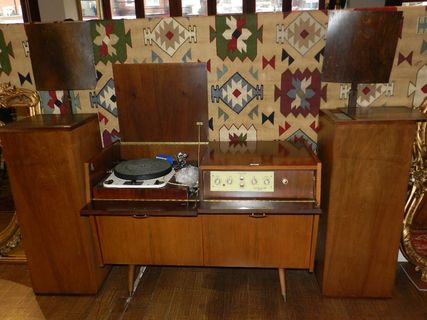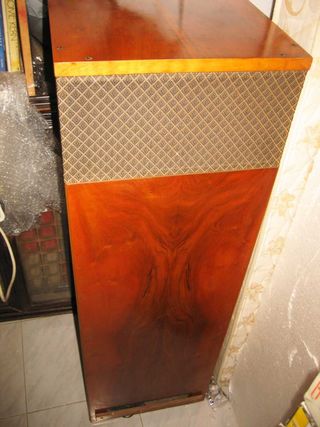EXPERT Electric Gramophones.
E.M.Ginn Handmade Gramophones.
For Michael Ginn, it must have been tough competing with E.M.G. He had spent years promoting, advertising and building the reputation of E.M.G, only to find himself having to compete against it.
Without the input of the Davey brothers, Expert had to come up with their own electrical range of gramophones. This was left up to David Phillips. He taught himself the art of amplifier building and soon was producing quality Hi-Fi products. He was helped by their family friend Edward Creese. (His son, Ed Creese Jnr and Joe Ginn remained friends. Sometime in the 1970’s., Ed Creese Jnr recorded an interview with David Phillips. The recording is available.)
1931. The first electrical accessory produced by Expert was a moving coil speaker unit that fitted in the Expert acoustic system. This was in direct competition to a similar device fitted to the tonearm of an EMG gramophone.
Feb. 1932. The Gramophone magazine reviewed the first Expert A.C. radio. “First-class reproduction”. Expert also ventured into making speakers in baffles and cabinets, standalone radios, amplifiers and custom built radiograms. David Phillips had also built the first amplifier available to the public with no more than 0.1% harmonic distortion. It was a learning curve that was interrupted by the War and it was not until 1951, that a whole new range of equipment was being offered under the Expert name. The Hi-Fi components from this era are simply wonderful. David Phillips out did himself.
The Hi-Fi Year Book was the Hi-Fi-bible of the late 50's, 60's and 70's. In the early issues only the best Hi-Fi components of the year were listed in the book. From 1956 to 1964, Expert amplifiers and components are featured in the Year Book. It says a lot about the quality of David Phillips work. David Phillips continued to advise EXPERT and also advertised his services in The Gramophone magazine until 1970.
EXPERT offered its clients a unique custom built music system to suit each customer. Components were sold separately, or combined in a unique EXPERT machine, "tuned" by David Phillips. No two machines were ever exactly the same.



